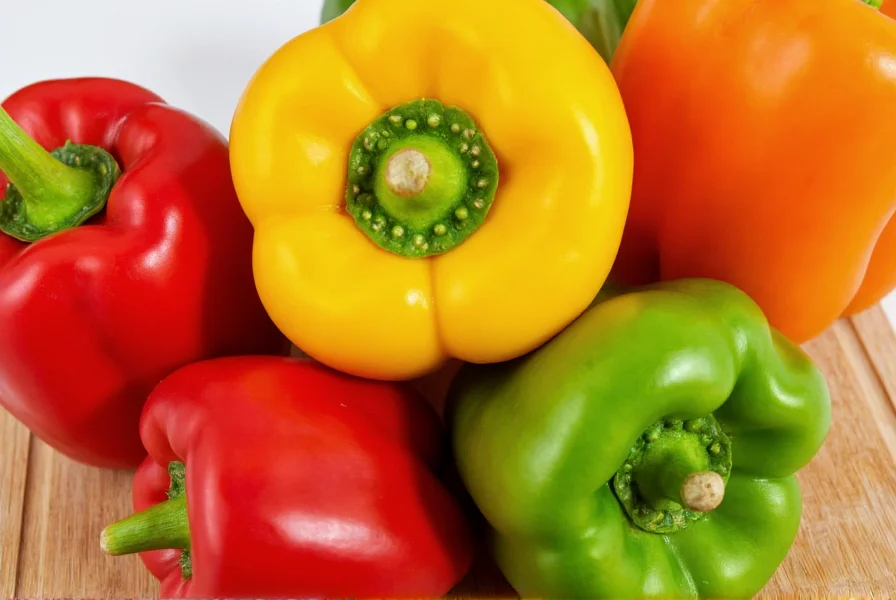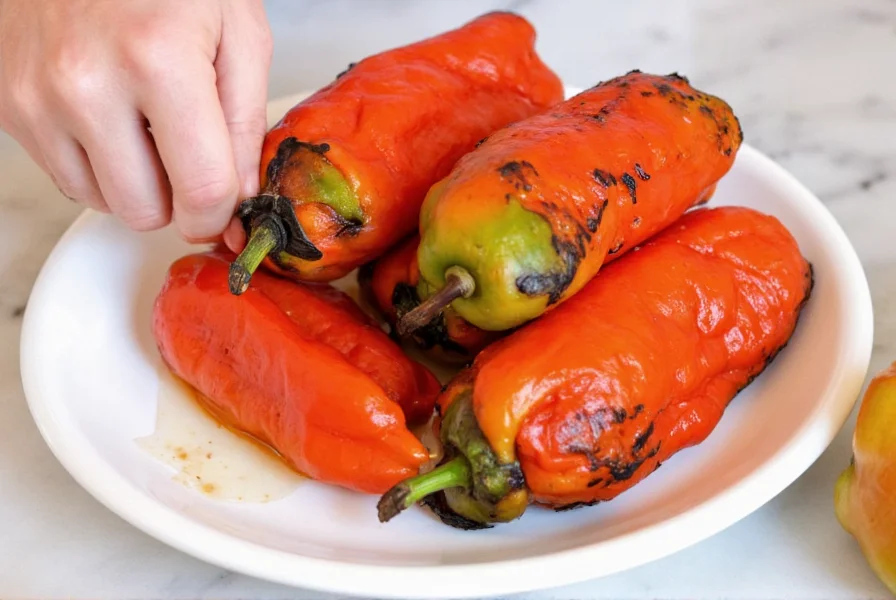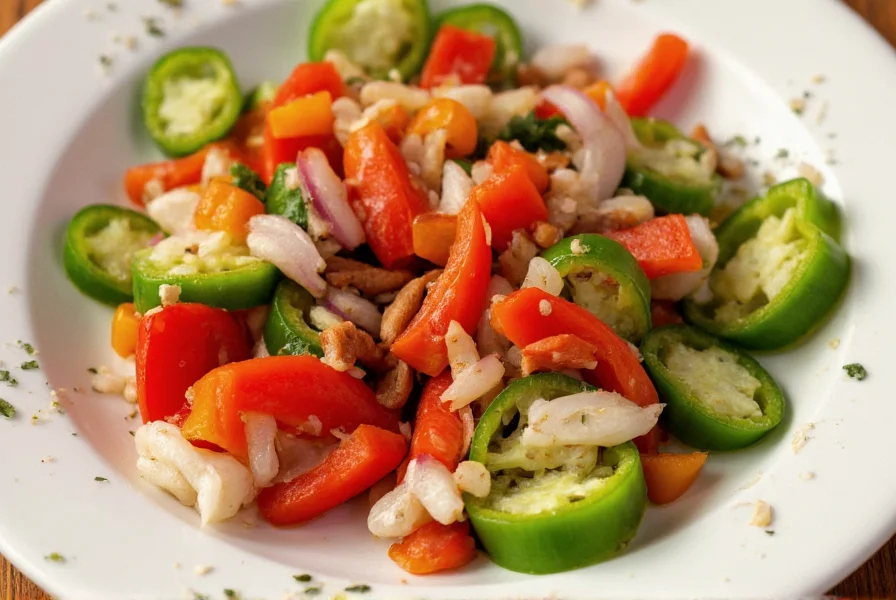Pepper salad stands as one of summer's most refreshing culinary creations, transforming simple ingredients into a visually stunning and nutritionally powerful dish. Whether you're looking for a quick side to accompany grilled meats or a standalone light meal, this versatile preparation showcases the natural sweetness of bell peppers while delivering impressive health benefits. The magic of pepper salad lies in its simplicity—requiring minimal cooking while maximizing flavor through thoughtful ingredient combinations and proper technique.
The Essential Components of a Perfect Pepper Salad
Creating an exceptional pepper salad starts with understanding its fundamental elements. While variations abound across culinary traditions, certain components remain essential for achieving that perfect balance of flavors and textures.
Pepper Selection: Beyond Just Color
Not all peppers are created equal when it comes to salad preparation. While red, yellow, and orange bell peppers offer natural sweetness that works beautifully in raw preparations, green peppers provide a more assertive flavor that benefits from brief marinating. For the most vibrant colorful pepper salad, use a combination of all four colors, which also maximizes nutritional diversity. Each color represents different phytonutrient profiles—red peppers contain lycopene, while orange peppers are rich in beta-carotene.

Dressing Fundamentals
The dressing makes or breaks a pepper salad. Unlike leafy green salads that can handle heavier vinaigrettes, pepper salads benefit from lighter, more delicate dressings that complement rather than overwhelm the natural sweetness of the peppers. A classic pepper salad dressing typically features:
| Dressing Component | Recommended Ratio | Function |
|---|---|---|
| Extra virgin olive oil | 3 parts | Carries flavors and provides smooth texture |
| Acid (lemon juice or vinegar) | 1 part | Brightens flavors and balances sweetness |
| Shallot or red onion | 1-2 tbsp | Adds aromatic complexity |
| Fresh herbs | To taste | Provides freshness and depth |
Classic Bell Pepper Salad Recipe
This straightforward bell pepper salad recipe serves as the perfect foundation for countless variations. What makes this version exceptional is the attention to pepper preparation technique—thin, uniform slices maximize surface area for dressing absorption while maintaining satisfying crunch.
Ingredients
- 3 large bell peppers (one each of red, yellow, and orange)
- 1 small red onion, thinly sliced
- 2 tbsp fresh parsley, finely chopped
- 1 tbsp fresh basil or mint, finely chopped
- 3 tbsp extra virgin olive oil
- 1 tbsp fresh lemon juice
- 1 tsp red wine vinegar
- Salt and freshly ground black pepper to taste
- Optional: 1/4 cup crumbled feta cheese for pepper salad with feta
Step-by-Step Preparation
- Wash peppers thoroughly and remove stems, seeds, and white membranes
- Cut peppers into uniform 1/8-inch thick slices for consistent texture
- Combine peppers and red onion in a large bowl
- Whisk together olive oil, lemon juice, vinegar, salt, and pepper
- Pour dressing over vegetables and toss gently to coat
- Add fresh herbs and optional feta cheese
- Cover and refrigerate for at least 30 minutes before serving
This quick pepper salad recipe requires no cooking and comes together in under 15 minutes of active preparation time, making it ideal for weeknight dinners or last-minute entertaining. The brief marinating period allows flavors to meld while maintaining the peppers' crisp texture.
Popular Pepper Salad Variations
Once you've mastered the basic preparation, numerous regional and creative variations can transform your pepper salad into something entirely new. These adaptations maintain the core concept while introducing exciting flavor profiles.
Mediterranean Pepper Salad
This popular variation incorporates ingredients common in Greek and Turkish cuisine. Add 1/2 cup kalamata olives, 1/4 cup crumbled feta, and 1 teaspoon dried oregano to the basic recipe. Substitute red wine vinegar with red wine vinegar for authentic flavor. This Mediterranean pepper salad pairs beautifully with grilled lamb or as part of a mezze platter.
Roasted Pepper Salad
For a deeper, sweeter flavor profile, try this roasted pepper salad version. Roast whole peppers over an open flame or under the broiler until charred, then place in a covered bowl for 10 minutes to steam. Peel off the skins, remove seeds, and slice. The roasting process concentrates the natural sugars and creates a more complex flavor that works well with balsamic-based dressings.

Expert Tips for Perfect Pepper Salad Every Time
Professional chefs employ several techniques to elevate simple pepper salads from ordinary to extraordinary. These evidence-based methods address common pitfalls and maximize flavor development.
Salt Timing Matters
Adding salt too early can draw out excessive moisture from peppers, creating a watery salad. For best results, add salt after combining peppers with the dressing, which creates a protective barrier that minimizes moisture loss while still allowing proper seasoning.
Temperature Affects Flavor Perception
Peppers express their full flavor profile at room temperature. While refrigeration is necessary for food safety after preparation, remove your fresh pepper salad from the refrigerator 15-20 minutes before serving to allow flavors to fully develop. Cold temperatures suppress aromatic compounds that contribute to the overall taste experience.
Texture Preservation Techniques
To maintain optimal crunch, avoid overdressing the salad. Peppers contain natural enzymes that break down when exposed to acidic components for extended periods. For meal prep purposes, store dressing separately and combine no more than 30 minutes before serving for the best healthy pepper salad texture.
Nutritional Benefits of Pepper Salad
Beyond its delightful taste and vibrant appearance, pepper salad offers impressive nutritional advantages that make it a valuable addition to any balanced diet. Bell peppers rank among the most nutrient-dense vegetables available.
One cup of mixed bell peppers provides more than 100% of the recommended daily intake of vitamin C—more than citrus fruits. They're also rich in vitamin A (particularly in red peppers), vitamin B6, folate, and potassium. The combination of raw preparation and healthy fats from olive oil enhances the absorption of fat-soluble vitamins and carotenoids present in the peppers.
This summer pepper salad serves as an excellent source of antioxidants, including lutein for eye health and various flavonoids with anti-inflammatory properties. Unlike cooked preparations that may lose some nutrients to heat, the raw preparation preserves maximum nutritional value.
Serving Suggestions and Pairings
Pepper salad's versatility makes it suitable for numerous culinary contexts. Consider these pairing suggestions to create balanced meals:
- With grilled chicken or fish for a light summer dinner
- Alongside hummus and pita bread for a vegetarian meal
- As a topping for grain bowls featuring quinoa or farro
- Paired with feta cheese and olives for a Greek-inspired platter
- Alongside roasted potatoes and grilled vegetables for a Mediterranean feast
For entertaining, serve your pepper salad in hollowed-out bell pepper halves for an attractive presentation that reinforces the dish's main ingredient. This pepper salad also makes an excellent accompaniment to sandwiches, particularly those featuring grilled vegetables or goat cheese.
Frequently Asked Questions
How long does pepper salad stay fresh in the refrigerator?
Properly stored in an airtight container, pepper salad maintains optimal texture and flavor for 2-3 days. The peppers will gradually soften as they absorb the dressing, but remain safe to eat for up to 5 days. For best results, store dressing separately and combine just before serving.
Can I use other types of peppers in my salad besides bell peppers?
Yes, but with caution. Mild varieties like cubanelle or banana peppers work well as bell pepper substitutes. Avoid very spicy peppers like jalapeños in large quantities unless you specifically want heat, as their capsaicin can overwhelm the delicate balance of a traditional pepper salad. If using spicier varieties, remove seeds and membranes and use sparingly.
What's the best way to slice peppers for salad?
For optimal texture and presentation, slice peppers into uniform 1/8-inch thick strips. This thickness provides enough substance for a satisfying crunch while allowing the dressing to coat the peppers effectively. Always remove the white pith and seeds first, as these can become bitter and affect the salad's texture.
Can pepper salad be made ahead for meal prep?
Yes, with proper technique. For meal prep, store chopped peppers and dressing separately. Combine no more than 30 minutes before eating to maintain optimal crunch. The acid in the dressing will gradually soften the peppers over time, which some prefer for stronger flavor integration but sacrifices texture.











 浙公网安备
33010002000092号
浙公网安备
33010002000092号 浙B2-20120091-4
浙B2-20120091-4